We are doing a series of blogs with tips on how to reduce your plastic waste. Some of the tips are not for everyone; the alternatives can initially be more expensive, but they may also save you money in the long run. This second article is the first part of a two part guide on how to reduce plastic in your bathroom. You can read the first article on how to avoid single use plastic when eating and drinking on the go here and the second part of how to reduce plastic in your bathroom here.
Personal Care Packaged In Plastic
In an average household bathroom, the only thing probably not made from plastic is the towel. Even if we have a bar of soap and paper toilet rolls, it is more than likely that those items were at least packaged in plastic. Our toothbrush, toothpaste, deodorant, face wash, body wash, shampoo, conditioner, mouthwash, razors and even items like face scrubs and face masks all come in plastic. It is strange to think that these items will outlive our great grandchildren, yet they are still sold when there are alternatives available!
The items we will show alternatives for Part One are:
- Soaps
- Loofahs
- Oral care
- Menstrual products
For Part 2 we will discuss alternatives for:
- Deodorant
- Lotions
- Face scrubs
- Razors
- Toilet paper
Plastic Free Soap, Shampoo And Conditioner
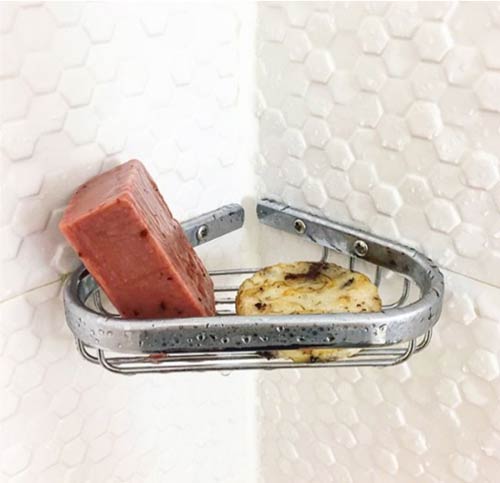
Shampoo and body wash bottles are usually made from HDPE which takes around 100 years to degrade depending on thickness. So, finding an alternative is important – we managed to clean ourselves before plastic, right? A lot of zero waste stores and, sometimes, hair salons will offer refills of your shampoos and conditioners. In case you haven’t got one of those close to where you live, here are some suggestions.
Shampoo And Conditioner Soap Bars
The easiest way is to buy soap bars, in the form of shampoo and conditioner! There are many companies online which supply these. They come as small as your average soap bars with no plastic packaging! They last a long time, with the shampoo bars lasting a few months, even with everyday use. Here are some options:
- https://primalsuds.com/product-category/head-cave-shampoo/
- https://uk.lush.com/products/shampoo
- http://lillyandlottie.co.uk/shop/#hair
- https://beautykubes.co.uk/
- https://zerowastemarket.org.uk/item/coconut-milk-shampoo-bar
- https://www.boobalou.co.uk/hair-care.htm
DIY Shampoo
If you’re savvy enough to make your own shampoo at home, and you’ve got access to package free store, then below is the recipe. Check out this link for instructions!
Here are the ingredients:
- ⅔ cup olive oil
- ⅔ cup coconut oil
- ¾ cup cool distilled water
- ⅔ cup other oil (see Choosing Oils for Hair)
- ¼ cup lye – also called 100% sodium hydroxide
- 2 tablespoons essential oils
The type of oil you use depends on your hair type. For example, oils for softness include grapeseed, almond or castor depending on your hair type and coconut oil works well for those wishing to repair brittle hair and split ends. Have fun experimenting!
Conditioner Bars
The conditioner bars take a bit of getting used to. Rubbing a bar on your hair doesn’t feel like the normal conditioning experience you have with liquid, but the results are just as good! The shampoo bars do outlive the conditioner bars, but they still last around 1.5 months on long hair! Beauty Kubes also offer shampoo and conditioner in the form of cubes. 1 cube = 1 wash, and the pack contains 27 cubes. They’re free from palm oil and everything nasty.
Soap Bars
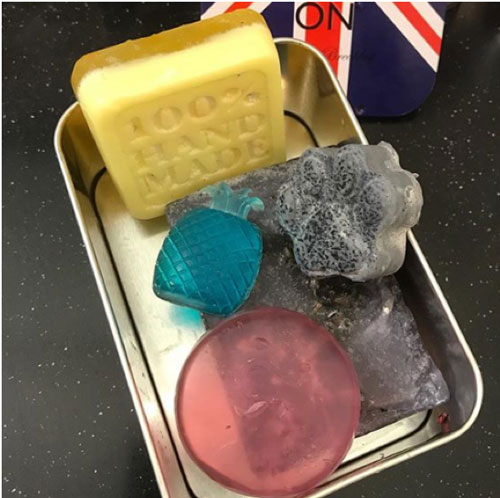
Although soap bars are readily available in supermarkets, it’s not always easy to find one that doesn’t have any plastic in the packaging. Soap bars can obviously be used for face washing too, but these companies suggested below have face wash options as well:
- https://primalsuds.com/shop/
- https://uk.lush.com/products/vegan-soaps
- http://lillyandlottie.co.uk/shop/#body
Soap bars are great travel companion: You can keep them in your hand luggage, they take up less room, and they are a lot lighter to carry. You’ll also have zero chance of accidental leakage! Keeping them in a tub – whether it is an old body lotion tub or small Tupperware box – is a great way to contain them in your luggage. You can also buy special tins for them via the links above if you have nothing at home already.
DIY Loofahs And Cotton Pads
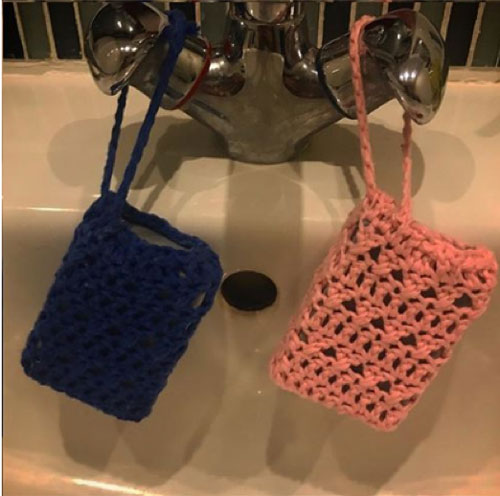
If you use soap bars to wash your body, loofahs are a great way to help dry the soap out, as well as creating that lather effect quicker. These are easy to make yourself if can knit or crochet, but if not you can purchase them from Lilly & Lottie.
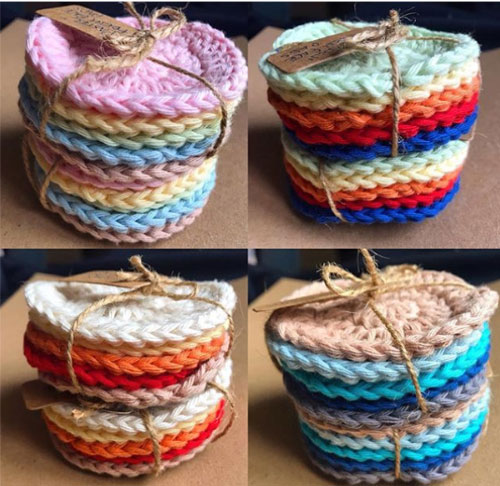
This principle can also be applied to the face, having woven cotton pads instead of make-up wipes or cotton pads will reduce your waste and save you money! Just use with soap and wipe away.
If you use liquid body wash a loofah really helps the it go further by creating those bubbles. However, most supermarket loofahs are plastic, and not durable. An easy alternative is buying a plastic free loofah which made from the plant itself!
Plastic Free Oral Care
Our next plastic items to tackle are toothbrushes, mouthwash, toothpaste and dental floss. All of which are sold in plastic, there’s a lot to change in the bathroom right? But don’t be daunted by all the suggestions, swapping the plastic out of your lives is a slow process!
Tooth Brushes
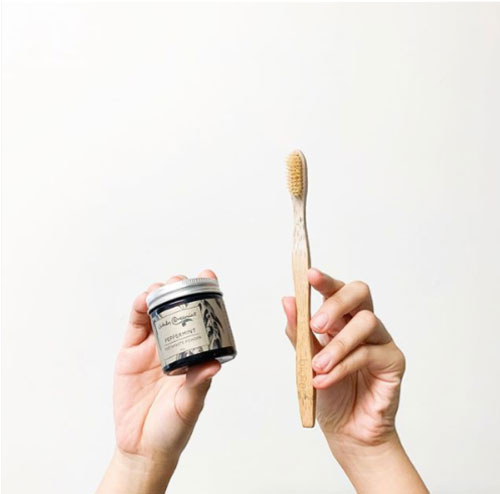
You may have already heard about the bamboo toothbrushes? Bamboo is the most sustainable plastic alternative as it removes CO2 from the atmosphere and is a very fast-growing plant.
Bamboo toothbrushes can be found online at eBay and Amazon at very affordable prices, but there are some smaller businesses which sell them too. We would probably all rather support a growing eco-friendly company than the eBay and Amazon giants! Unfortunately, the bristles are not recyclable, but its still a major reduction.
You might find that bamboo toothbrushes are quite soft compared to a plastic one, but its easy to get used to. Zerowasteclub’s toothbrush reviewers seem to find these to have stronger bristles (and you only have to replace the head of the brush, creating even less waste!).
Toothpaste, Dental Floss and Mouth Wash
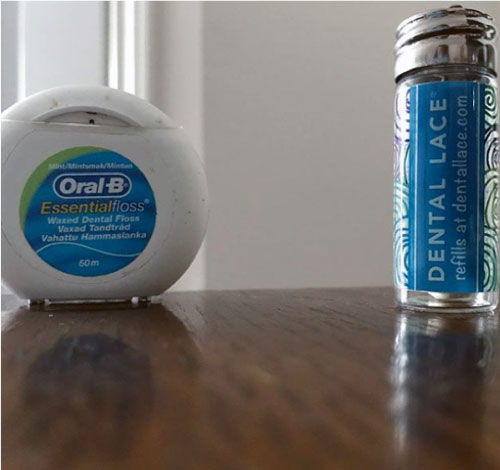
Back in the day before we were reliant on plastic, toothpaste used to come as a powder in a metal tin. Now it’s hard to find one not in plastic. Although there are a few alternatives to regular toothpaste, they are often criticised for not being minty enough; for not containing fluoride; and for not lathering well. The decision is up to you as everyone’s priorities are different, but it doesn’t take long to get used to toothpaste which doesn’t lather.
You can use a paste or powder that comes in a glass jar, there are many options like georganics powder, georganics paste and truthpaste.
You can also use ‘toothytabs’ which are tablets you place is your mouth. Chewing activates the paste and then you brush away. Some of these are known to contain fluoride also. Here are some options: lush, save some green, and ecoliving.
Georganics and lush also make mouthwash in the form of tabs and jars. Companies such as ecoliving and zerowastemarket also produce natural dental floss. If you want to save some money, a thread of cotton could always work!
Menstrual Products
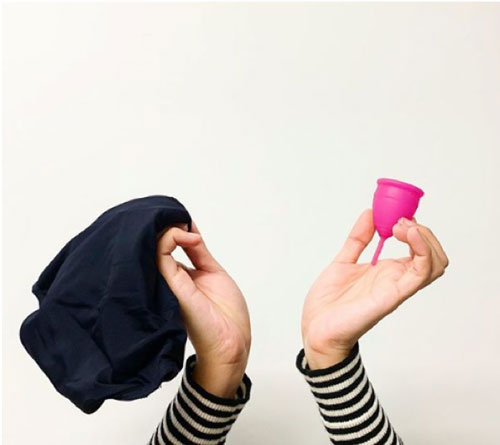
It may come as a surprise that sanitary products along with their packaging generates more than 200,000 tonnes of waste per year, and they all contain plastic. Sanitary pads are around 90% plastic, so reducing this is a huge step to reducing your impact!
There are three options out there now:
- Menstrual Cups: Mooncups, OrganiCup, The DivaCup – there are several brands out there. A menstrual cup is a silicon cup that collects the blood, and you wash it and reuse it. It is recommended that you buy two cups, and to sterilize each between uses to reduce the chances of Toxic Shock Syndrome (TSS). You can buy them in the supermarkets and in retailers such as Boots. They are expensive at first, but will save you money and you won’t have to remember to restock. Menstrual cups are as effective as sanitary pads and tampons.
- Cotton Sanitary Pads: There are so many options online, with so many reviews. These are made of fabric, and you wash between uses. They are more comfortable, more absorbent and affordable.
- Padded Underwear: SheThinx are the leading brand in menstrual underwear, with lots of variety for colours and absorbency. There are other brands out there such as Modibodi, Lunapads. They are expensive, there are cheaper options on eBay but the quality is not the same. They do not leak and are quick to absorb, and can even be worn as normal underwear.
Every Little Helps
Making any small changes listed above is a great start at reducing your impact. Don’t be overwhelmed at the amount of options out there, and remember to use what you have already bought!
Disclaimer
References in this article to any specific commercial products by trade name, trademark, manufacturer, or otherwise, does not necessarily constitute or imply its endorsement, recommendation, or favouring by the Olive Ridley Project. The views and opinions of authors expressed herein do not necessarily state or reflect those of the Olive Ridley Project and shall not be used for advertising or product endorsement purposes.



